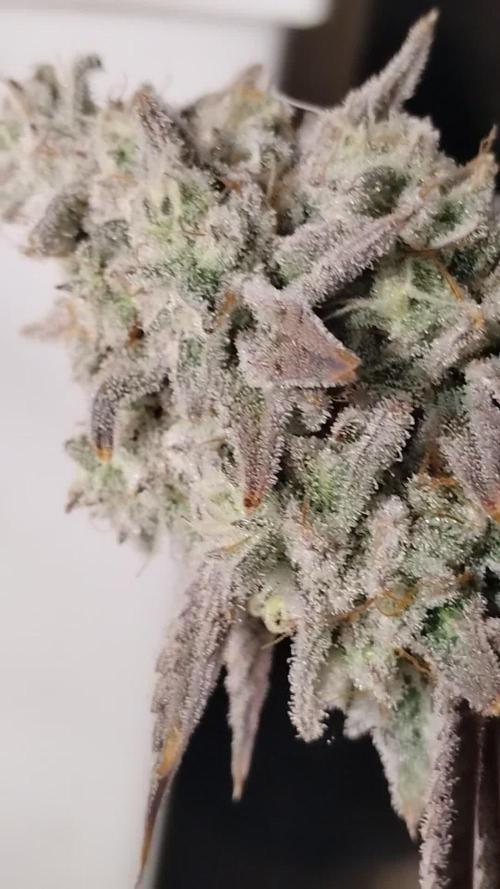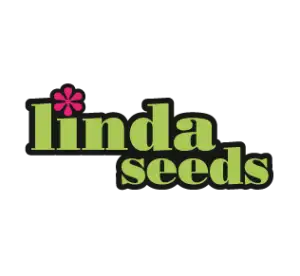The Grow Awards 2026 🏆 

































Likes
Comments
Share


@PolezGardn
Follow
week three flower everything looks fine so far :D
eight days after defoliation
I water them with 1.5l every 48h
the light I use was set to 80% and it hangs 80cm away from the tops
both gorillas had thrown a few balls, but I removed them as soon as I saw them, I will keep watching them!
Likes
5
Share


@CannaIGrow
Follow
Plant looks good to me. I have removed some lower branches that I didn't feel were going to produce much.
Likes
1
Share


@bigsmoke42069
Follow
Week 5 of flowering 10/16/24
Changed nutrients to fit week 5
Buds are getting bigger and thicker.
Defoliated plants.
Watering 4 times a day (with 10%-20% runoff)
hand watering to full saturation of the media with 20% runoff at the end of the week.
Checking runoff EC every 3 days.
Lights now at max height and 90% power.
After replacing the exhaust fan timer, didn't notice ant issues.
Adding 2.5ml/gal of H2O2 (35%) to the reservoir to keep bacteria away.
Likes
9
Share


@HUMO_Cultiva
Follow
We start week 3 of bloom!! Goofiez 2 amor compound genetics it’s the champions!!
Likes
71
Share


@DogDoctorOfficial
Follow
Greetings, fellow growers! Week 4 has been a whirlwind of excitement and progress in our Anesia garden, filled with transplant triumphs, nutrient delights, and promising signs of growth. Let's dive deep into the heart of the action and uncover the secrets behind our thriving plants!
First up, let's talk transplant magic. We took the bold step of moving our beloved Anesia beauties into their final 15L autopots, setting the stage for a journey of epic proportions. But we didn't stop there – oh no! We pampered our plants with a special super soil mix from Aptus Holland, carefully crafted to provide the perfect blend of nutrients and microbial activity for optimal growth.
Let's break it down:
Super Soil Mix: Our super soil mix is a concoction of all-in-one pellets, substrate buffer powder, and micromix soil, meticulously blended to create a nutrient-rich environment that promotes robust root development and vibrant plant health. The all-in-one pellets release essential nutrients slowly over time, ensuring a steady supply for our hungry plants. Meanwhile, the substrate buffer powder helps maintain pH stability, while micromix soil provides essential trace elements for overall plant vitality.
Mycormix: To give our plants an extra boost, we incorporated Mycormix during transplanting. This powerful mycorrhizal inoculant establishes a symbiotic relationship with the roots, enhancing nutrient uptake and promoting drought resistance. It's like giving our plants their very own team of microscopic helpers!
With roots looking as impressive as ever, it's clear that our Anesia beauties are settling into their new homes with gusto. But we didn't stop there – oh no! We treated them to a refreshing drink of Aptus Veg Mix, a nutrient-rich cocktail containing regulator, camg boost, all-in-one liquid, and start booster. It's like a spa day for plants, complete with all the essential nutrients and pampering they could ask for!
And just when you thought things couldn't get any better, we topped it all off with a luxurious spritz of Nutrispray, because why not spoil our plants rotten? This foliar spray is packed with essential nutrients and trace elements, giving our green friends a little extra love and attention.
With each passing day, our Anesia adventure grows more exciting, and I can't wait to see what the future holds. Stay tuned for more updates, more growth, and more green goodness as we continue to cultivate joy and growth together in our Green Oasis!
Genetics Red Banana Pudding = RBP
Apricot Oreoz = AO
Zoomiez = Z
Future#1 = F
https://anesiaseeds.com/
Plant nutrition - Aptus Holland - https://aptus-holland.com
LED Photons - Future of Grow - https://www.thefuturofgrow.com/
Controls - Trol Master - https://www.trolmaster.eu/
Watering - Autopot - https://autopot.co.uk/
Tent - Mars Hydro - https://marshydro.eu/
Love and attention - Me, myself and i
As always thank you all for stopping by, for the love and for it all , this journey of mine wold just not be the same without you guys, the love and support is very much appreciated and i fell honored and blessed with you all in my life, With true love comes happiness. Always believe in your self and always do things expecting nothing and with an open heart , be a giver and the universe will give back to you in ways you could not even imagine so
More info, the ocasional give-away and exclusive updates from all my adventures can be found - links in the profile description
Friendly reminder all you see here is pure research and for educational purposes only
Growers Love To you All 💚
Likes
7
Share


@OwlGang_Uk
Follow
Gorilla Glue #1 - Harvest Comment - I Am Very Satisfied With What I Got, I got 3 ounce 7 grams - I Uses Advance Nutrients PH perfect In veg then I switch to the iguana juice organic juice for the flowering stage. I notice a much more slower growth when I switch to organic nutrients.00
Likes
10
Share


@ZzTooRightOGzZ
Follow
She's slowly getting better 😁
I flushed her at the start of the week because of a nutrient lockout.
Likes
53
Share


@Roberts
Follow
I am dropping a Grand Daddy Purple auto. I scuffed both seeds ends. I dropped it in water. It will stay there for 24 to 48 hours until a tap root shows. I will then drop it in coco, and dome till it sprouts. Thank you ILGM, and Medic Grow. 🤜🏻🤛🏻🌱🌱🌱
Thank you grow diaries community for the 👇likes👇, follows, comments, and subscriptions on my YouTube channel👇.
❄️🌱🍻 Happy Growing 🌱🌱🌱
https://youtube.com/channel/UCAhN7yRzWLpcaRHhMIQ7X4g
Likes
9
Share


@Rizik86
Follow
Day 29 - Checked PPM 720. Water always seems to be low from here on. The plant uses so much daily. Late night PPM check 450.
Day 30 - Checked PPM 420. ***WHITE HAIRS ARE SHOWING*** Added 10 mL of CalMag Micro Grow and Bloom. Added 5 mL of each additive plus BIG BUD AND NIRVANA. I dont have bud ignitor and bud factor x or i would have added them as well. PPM is 1,600. Plant is 17 inches tall. Light is 12 inches away from top of plant. PAR/PPFD is around 600 at the tops of the plant. DLI is around 30.
Day 31 - Checked PPM 1,080. Plant is 18 inches tall and 24 inches wide. I had to expand the grow area to accommodate the plant.
Day 32 - Checked PPM 895. Water is low. Raised the light as some of the leaves was taco shaped. Light is now 18 inches above the plant. Plant is 19 inches tall.
Day 33 - Checked PPM 570. Water is low. Added 5 mL of CalMag Micro Grow and Bloom. PPM is 720. Plant is 22 inches tall.
Day 34 - Checked PPM 620. Plant is 23 inches tall. Added 5 mL of CalMag Micro Grow and Bloom. Added 2 mL of each additive. PPM is 1,020.
Day 35 - Checked PPM 700. Plant is 25 inches tall. Roots are as thick as a pencil. The rootball is massive!.
Likes
40
Share


@xbrico
Follow
Day 99 - Change up for ripening. Have Moved to the Sunmaster 10K finisher to see about frosting up dem der buds. Have also moved to using Dragon Force now to get the final push on them prior to flushing them back for the harvest.
Getting plenty of Brown pistils (Much easier to see under the 10K) but from last nights look, trichs were still pretty clear. Have ordered a wee USB microscope of the Big Bad Amazon to give them a better look (expecting it Wednesday) as the wee handheld loope I have is pretty pish!!!
Apart from that, its now a watching and waiting game!
Hope you all enjoy the vid/pics and happy growing all!!!
Likes
28
Share


@Mitch
Follow
Loving how they smell, nice colas and a huge crystals forming, next time will make sure to get more seeds, the banana blaze is huge and really different from previous grow, certainly is is a light issue glad I got my grow lights
Likes
18
Share


@Haoss
Follow
I've topped this beautiful girl 16 times, now I'm going to take some time off from the stress to get out, then I'm going to put on the scrOG net and switch the light cycle to 12/12, she feels great💚🌋
Likes
2
Share


@Ninjabuds
Follow
I have got a whole crew of four Bubble OG plants, and they're all doing really well. These plants are like quadruplets – they all look super similar, with the same strong smell that's kinda like a putrid skunk. They're all uniform in height and have the same spacing between their branches. It's like they're all following the same blueprint.
Happy late turkey day grow diaries world!!!! It's now day 24 from seed for all the seedlings I have going. The past few days the plants have really started to take off. There roots have really started to dig in. Every other water I am still giving 2ml per gal of fox farm grow big. I keep having to tell myself not to add any more nutes other than that. I don't want to fry my plants but I also want they to start jumping. I'm quite excited for the coming week, I think the next 7 days or so is when the plant really starts to transform and look more like a pot plant than just some random little green thing.
A few days ago I decided to move the plants from under my 55w cheep amazon light to under my spider farmer 100w newer version light with the good leds in it. The plants will hopefully be ready to up pot them here soon and get them in the large tent.
Sometimes when growing multiple different strains it can be really hard to balance giving to much or to little light. You don't want the faster growing plants to get to stretched out waiting on the slower plants to catch up
I spend Thanksgiving day morning transplanting the plants into 2gal pots. I am useing spme promix potting soil it's my 1st time tring this soil. It is actually doing really well the roots were all white and nice looking. I think next time I'm going to add some worm casting, kelp, granular mycos, and a little bit extra perlite. I just didn't have the money with christmas coming to splurge for all the extra stuff. I got rid of 2 plants 1 of the bubble og and 1 skunk apple runtz. There is only room for 10 pots in the 2x4 tent. I will peob only bring 8 of them to flower, always good to have back ups. Yesterday I also stuck the plants back under the 500w medicgrow mini sun 2 in my 2x4 tent. They did great under it the 2nd half the day I was happy they didn't get stressed. I had put them under that light a little early about 10 days ago or so. I am expecting in a week these plants will ge going crazy with growth
Likes
16
Share


@AestheticGenetix
Follow
NOTE: other harvest pics will be in the week before. I can't upload everything into this week so I picked a few but I want to save space for dry bud pictures as well. If you wish to see more harvest pictures. Go to the week previous and look at the end.
Chopped at day 63 with about 15% amber on the top buds and then only cloudy on the mids and lower
Likes
Comments
Share


@MADMANk
Follow
Taken fans off the lower portion of the plant 1-5 every few days or so, currently doing no defoliation and havnt passed 4/5 days.
Terpes- pretty amazed by the fact i smell fresh oranges even now in early flower!
(Seaweed drench once a week)
Likes
8
Share


@Octopot
Follow
Check out our video!! This week was week one, transplanting 3 cuttings into the Octopots with Grids/Liners.
This is our first Research & Development grow here this year! Will the Lil' Girl take off? Maybe the Middle Child is strongest after all?! Or does maturity win it in the end for Big Sis? Come along with us while we have fun learning and testing theories!
Likes
12
Share


@MadeInGermany
Follow
Flowering day 3
since time change
to 12/12
Hey guys :-)
The ladies are developing really well 😊.
Was poured 2 times with 1 l each (groundwater see description at the bottom)
They were placed in the flowering tent and, as always, a few cuttings were taken.
Everything was made clean.
Fresh osmosis water is applied and the plants are sprayed and checked.
Stay healthy 💚🙏🏻
👇🏼👇🏼👇🏼👇🏼👇🏼👇🏼👇🏼👇🏼👇🏼👇🏼👇🏼👇🏼
You can buy this Nutrients at :
https://greenbuzzliquids.com/en/shop/
With the discount code: Made_in_Germany you get a discount of 15% on all products from an order value of 100 euros.
👇🏼👇🏼👇🏼👇🏼👇🏼👇🏼👇🏼👇🏼👇🏼👇🏼👇🏼👇🏼
Water 💧 💧💧
Osmosis water mixed with normal water (24 hours stale that the chlorine evaporates) to 0.2 EC. Add Cal / Mag to 0.4 Ec Ph with Organic Ph - to 5.8 - 6.4
MadeInGermany





















